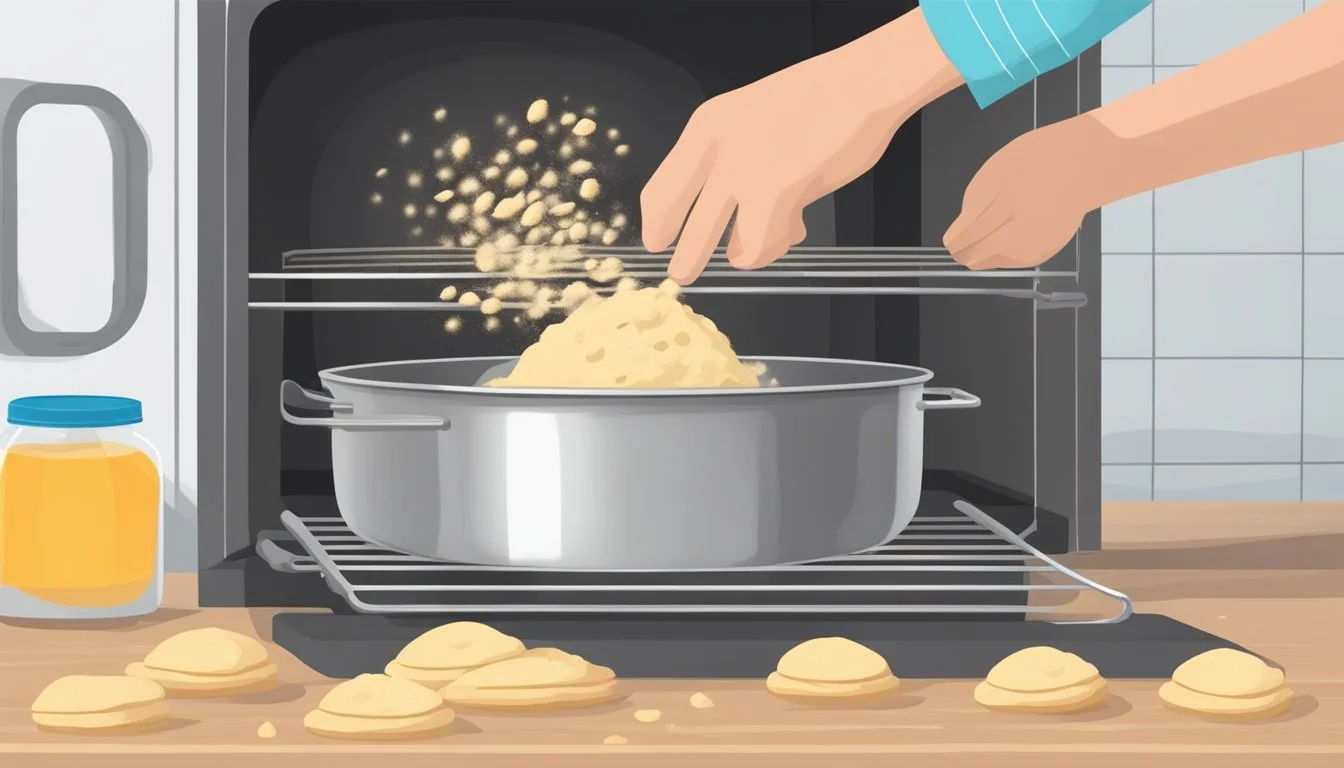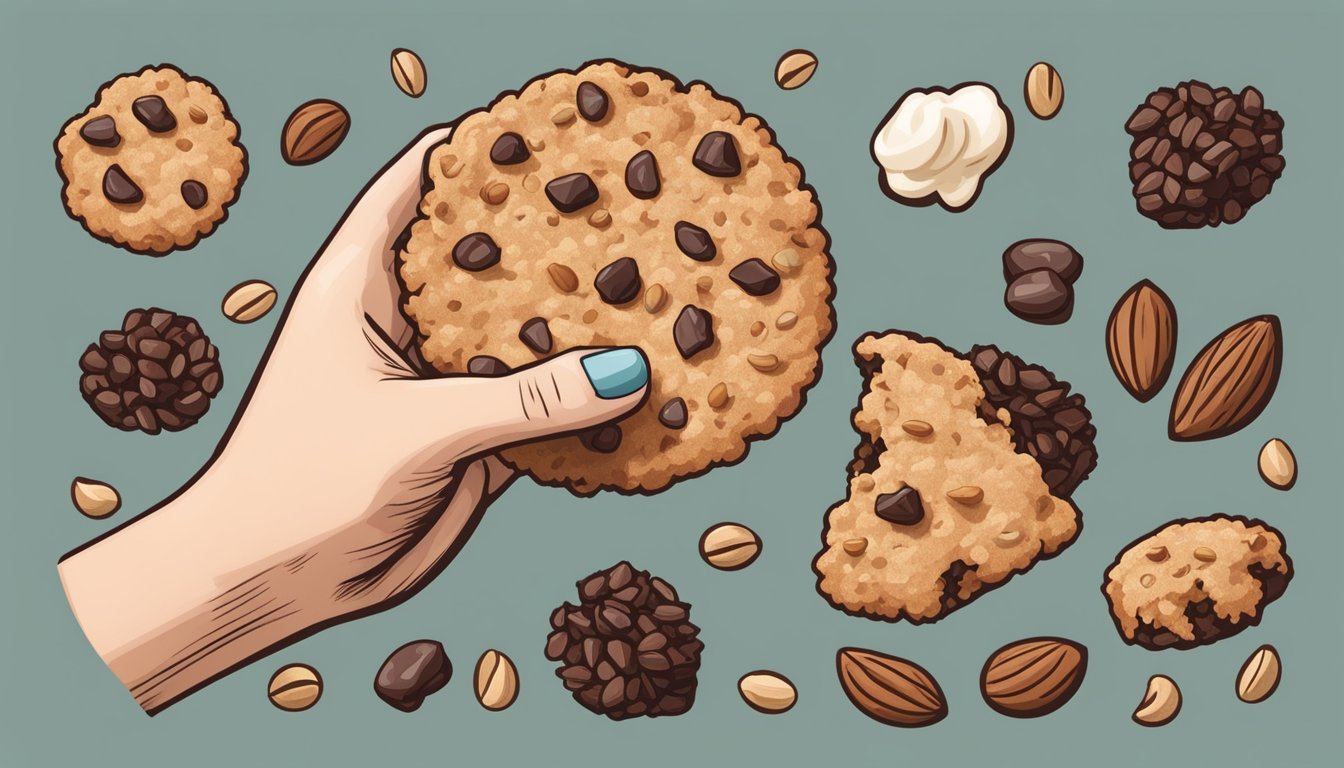How do you eat an oatmeal cookie?
Simple Steps for Maximum Enjoyment
Eating an oatmeal cookie can be more than just a mundane snacking experience; it can be a moment of simple pleasure and satisfaction. The humble oatmeal cookie has stood the test of time, remaining a beloved treat in many cultures. This baked good typically combines oats with a variety of ingredients such as sugar, butter, and flour, and often includes mix-ins like raisins, nuts, or chocolate chips. Its appeal lies in the chewy texture, the balance of sweet flavor with the heartiness of oats, and its comforting, homemade feel.
While there may not be a single correct way to enjoy an oatmeal cookie, there are methods that can enhance the experience. One can savor an oatmeal cookie at room temperature where its texture is ideally chewy, or by warming it slightly for a gooier consistency. Some may prefer the cookie with a glass of milk, which complements the flavor and makes for a classic pairing.
The nutritional aspect of oatmeal cookies often comes into question, aiming to strike a balance between indulgence and health. They can contain beneficial fiber and protein from the oats and nuts, if included. The presence of fat and sugar is what primarily gives these cookies their delectable taste and texture, though some recipes make adjustments to cater to different dietary preferences and nutritional goals. It's the personal choice of when and how to enjoy an oatmeal cookie that concludes the experience, whether as a quick snack, a dessert, or an accompaniment to a cup of tea or coffee.
Oatmeal Cookie Composition
When constructing an oatmeal cookie, the makeup of ingredients and their nutritional implications are crucial. Here, the focus is on selecting quality components for superior taste and health benefits, and on understanding the cookie's nutritional content.
Selecting Ingredients
Flour: Most oatmeal cookie recipes call for all-purpose flour as the base. For a richer cookie, some might opt for a combination of whole wheat and all-purpose flours, providing a denser texture and additional nutrients.
Oats: Choosing between rolled oats and old-fashioned rolled oats affects texture; the former often results in a softer cookie, while the latter gives a more robust bite.
Fats: Unsalted butter is a common choice, providing moisture and richness, while some recipes might use shortening or oils for different dietary needs.
Sweeteners and Flavorings: Brown sugar and granulated sugar create the sweet profile of the cookie, with vanilla extract and spices like cinnamon complementing the oats' nuttiness. Raisins, chocolate chips, or nuts can be added for extra texture and flavor.
Leavening agents: To ensure a properly risen cookie, a precise amount of baking powder and/or baking soda is included.
Eggs: A large egg binds the ingredients and contributes to the cookie's structure.
Nutritional Profile
Macronutrients: In typical oatmeal cookies, protein ranges from 0.4 to 0.9 grams, fat from 2 to 3.5 grams, and fiber from 0.1 to 0.4 grams per cookie.
Minerals: A single cookie might provide up to 14 milligrams of calcium, and also contains varying amounts of iron and potassium.
Calories: Each cookie contains approximately 54 to 72 calories, with sizes and additional mix-ins like nuts and chocolate impacting the total count.
Healthier options: For a more nutritious cookie, one can increase the oats-to-flour ratio, use reduced amounts of natural sweeteners, and incorporate ingredients high in antioxidants like dark chocolate.
Preparing the Dough
When crafting the dough for oatmeal cookies, the focus should be on achieving the right texture and flavor balance. The mixing technique is critical for incorporating air into the batter, while the dough consistency determines the final texture of the cookies.
Mixing Technique
To begin, one needs to cream the butter, which should be at room temperature, with both brown sugar and white granulated sugar. The creaming process is executed with a hand mixer or stand mixer, beating the ingredients until the mixture is light and fluffy. This process introduces air into the batter, resulting in soft and chewy cookies. It is also the stage to blend in vanilla extract or molasses for added flavor.
Dough Consistency
The consistency of the cookie dough should be thick yet manageable. Instructions typically call for gradually adding the dry ingredients to the wet mixture to ensure even distribution. The goal is to combine them until just incorporated, avoiding over-mixing which can lead to tougher cookies. The moisture content of the dough, largely influenced by the butter and eggs, contributes to a soft and chewy texture. Once mixed, the consistency should be evaluated and if the dough seems too sticky, a bit more flour can be gently folded in to achieve the desired thickness.
Baking the Cookie
Baking the perfect oatmeal cookie involves precise oven temperatures and timing to achieve the desired texture, whether that's soft, chewy, or somewhere in between.
Oven Temperatures
Oven temperature is crucial for baking cookies. Ideally, one should preheat the oven to 350°F (175°C), which is a common temperature that allows oatmeal cookies to bake evenly. Using light-colored baking sheets lined with parchment paper can help prevent the bottom of the cookies from browning too quickly. If one is toasting oats for added flavor, it should be done at the same temperature, being careful not to let them burn.
Timing and Texture
The baking time influences whether the oatmeal cookie will be soft or chewy. For a softer cookie, bake for approximately 10 to 12 minutes, or until the edges are just golden brown but the center remains light and soft. For a chewier texture, extend the baking time by a few minutes, ensuring the cookies are evenly golden brown. After removing the cookies from the oven, allow them to cool on the baking sheets for a couple of minutes before transferring to a wire rack. This step ensures that the finished cookies set properly and maintain their texture.
Customizing the Flavor
To elevate the taste profile of your oatmeal cookies, consider experimenting with a variety of add-ins and spices. The choice of ingredients can transform the classic oatmeal cookie into a personalized treat to cater to individual preferences.
Add-In Varieties
For those who enjoy texture and crunch in their cookies, a range of chopped nuts such as walnuts, almonds, or pecans makes an excellent choice. Chocolate lovers might opt for dark chocolate chips, which provide a rich flavor, or white chocolate chips for a sweeter taste. Butterscotch chips add a buttery and savory twist, while peanut butter lends a creamy texture with its distinctive taste.
Incorporating fruits like dried cranberries or raisins can offer a chewy contrast and a burst of tartness or sweetness, respectively. Here's a simple breakdown of popular add-in variations:
Chopped Nuts: walnuts, almonds, pecans
Chocolate Chips: dark, white, milk chocolate
Fruit: dried cranberries, raisins
Spices and Flavor Enhancers
To intensify the flavors, spices such as cinnamon and nutmeg add warmth and depth. Ground cinnamon is a classic choice that pairs beautifully with the natural flavors of oatmeal. For a subtler enhancement, a dash of nutmeg can complement the cookie's sweetness with its spicy undertone.
The essence of vanilla extract acts as a flavor enhancer, rounding out the sweetness and complementing other ingredients. When adding flavor enhancers, it's essential to balance the quantities to ensure no single spice overwhelms the cookie:
Spices:
Cinnamon: 1/2 to 1 teaspoon for warmth
Nutmeg: 1/4 teaspoon for a spicy undertone
Flavor Enhancers:
Vanilla Extract: 1 teaspoon for a rich aroma
By judiciously customizing the add-ins and spices, one can create a batch of oatmeal cookies that cater perfectly to their taste preferences.
Storing and Serving
To maintain the quality of oatmeal cookies, proper storage is crucial, and the way they are served can enhance the eating experience. Here's how one can store various kinds of oatmeal cookies, from classic oatmeal chocolate chip cookies to oatmeal scotchies, and suggestions for presenting them effectively as snacks or desserts.
Optimal Storage Methods
Airtight Containers: For the best oatmeal cookies, storing them in an airtight container is essential. This approach keeps them at room temperature and protects them from excess air that can cause them to become stale.
Room Temperature: Ideal for short-term storage, ensuring cookies retain their texture.
Refrigerator: Not typically recommended as it can dry out the cookies.
Freeze: To extend freshness, freezing cookies is effective. One should place them in an airtight container with layers separated by wax paper, perfect for healthy oatmeal cookies or other varieties.
At Room Temperature: Keep for up to a week in a tightly sealed container.
In the Freezer: Cookies can last for up to 6 months when stored correctly at 0°F or lower.
Serving Suggestions
When serving oatmeal cookies, presentation matters. For snacks, pair them with a glass of milk or as part of an assorted cookie tray. As desserts, oatmeal cookies can be accompanied by ice cream or a dollop of whipped cream.
Snack Time: Serve at room temperature for optimal flavor and texture.
Dessert Delight: Warm the cookies slightly in the oven if they've been frozen, enhancing their natural flavors and making them a perfect complement to dessert.
By following these storage and serving tips, one can ensure that oatmeal cookies, whether they're enjoyed as a quick snack or a decadent dessert, are always presented at their best.
Alternative Oatmeal Cookie Recipes
Oatmeal cookies are versatile, allowing for numerous adaptations to suit various dietary preferences and taste profiles. The following subsections explore health-conscious options and distinctive variations, offering inspiration for those who want to enjoy this classic treat with a twist.
Health-Conscious Options
They can opt for gluten-free oatmeal cookies that often use oat flour or quick oats as a base—ensuring the treat suits those with gluten sensitivities. Healthy oatmeal cookies might also reduce sugar content by substituting with honey or maple syrup as seen in some recipes. For example, a variant that incorporates dark chocolate instead of milk chocolate chips provides antioxidants while still satisfying sweet cravings.
Gluten-Free Adjustments: Use gluten-free oat flour or certified gluten-free oats.
Sweetener Substitutions: Replace traditional sugars with honey, applesauce, or maple syrup.
Distinctive Variations
They seeking to diversify their oatmeal cookie experience can indulge in spiced oatmeal cookies or peanut butter oatmeal cookies. Spiced versions often feature warming spices like cinnamon or nutmeg, which can transform the simple cookie into a complex dessert. Oatmeal raisin cookies remain a timeless variation, but one can also encounter inventive adaptations like oatmeal scotchies with butterscotch chips or monster cookies loaded with a variety of mix-ins such as M&Ms or nuts.
Spiced Cookies: Incorporate spices like cinnamon, nutmeg, or even pumpkin spice.
Mix-in Variety: Experiment with add-ins such as raisins, butterscotch chips, or assorted nuts.







